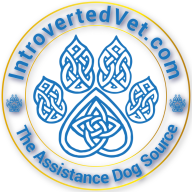Service Dog Advocate
Welcome to ServiceDogAdvocate.com, your comprehensive resource dedicated to understanding, advocating for, and navigating life with service dogs.
Join Us and make the community stronger.
Headlines
Welcome to ServiceDogAdvocate.com, your comprehensive resource dedicated to understanding, advocating for, and navigating life with service dogs.
Join Us and make the community stronger.
